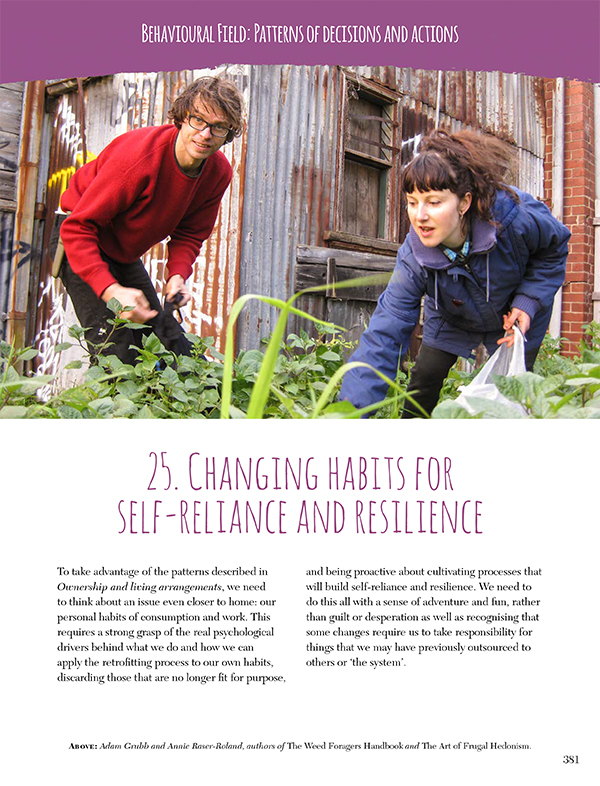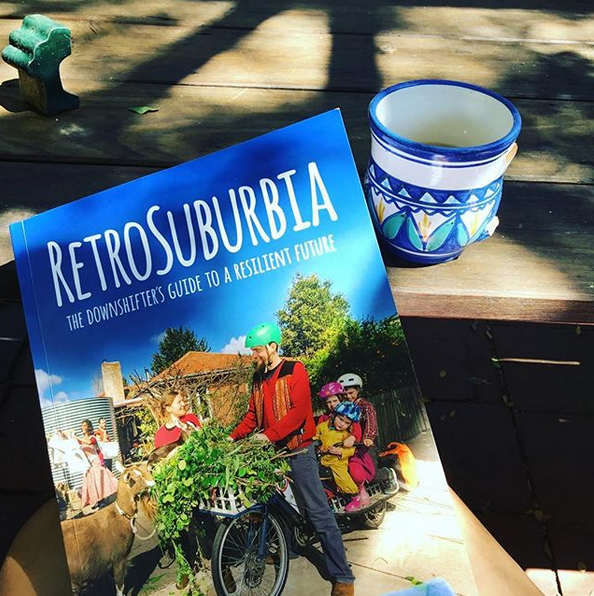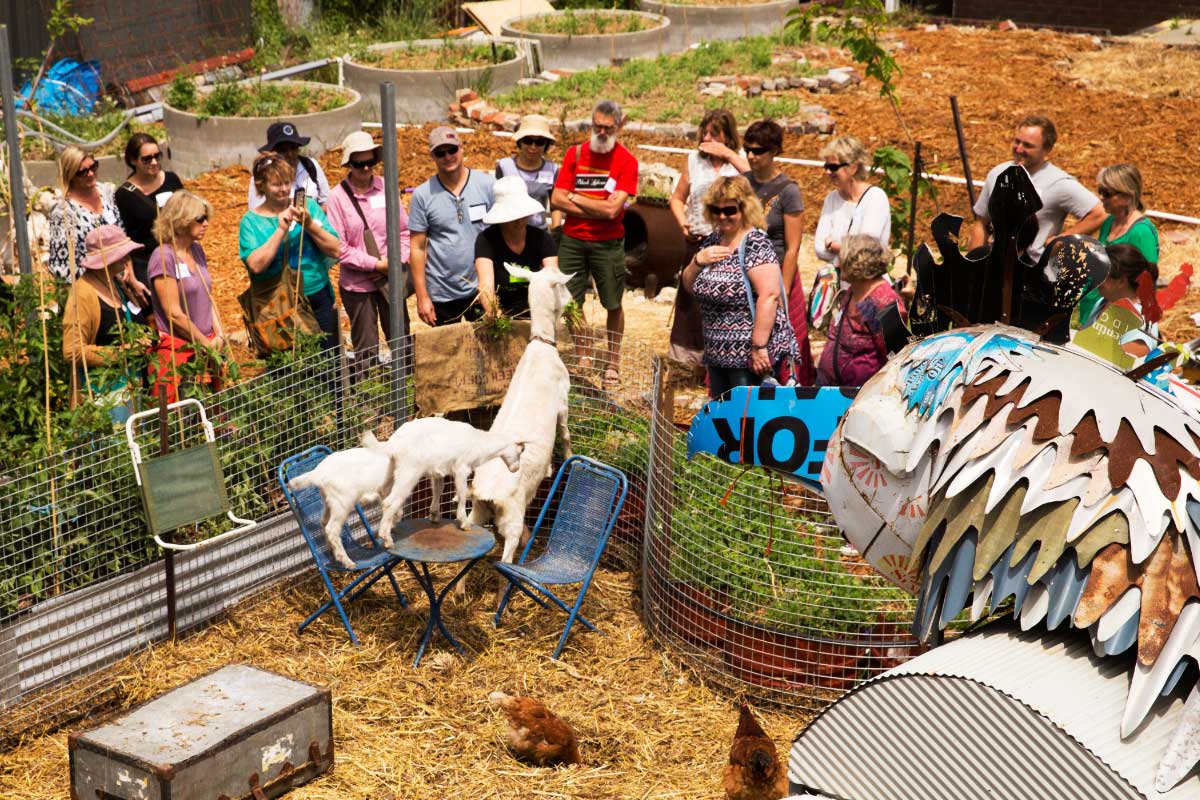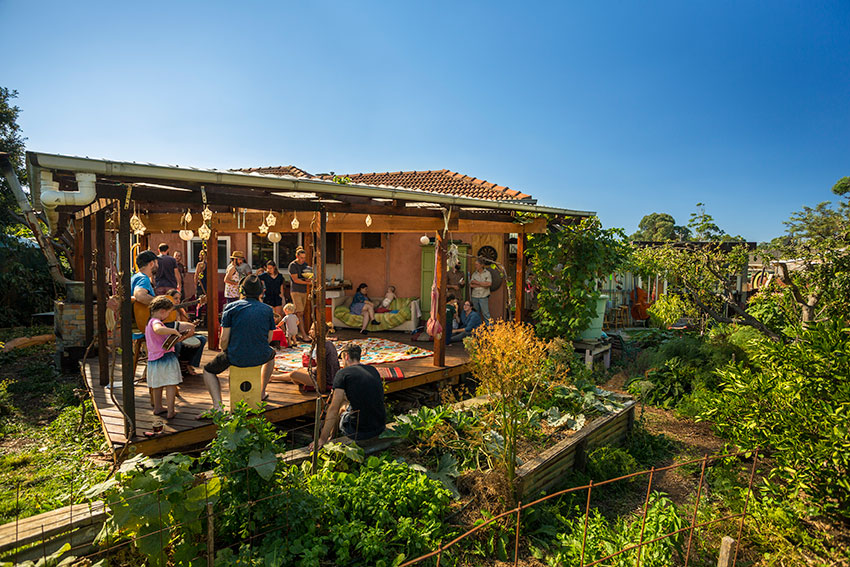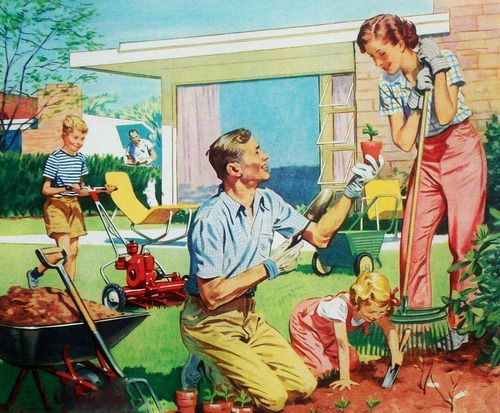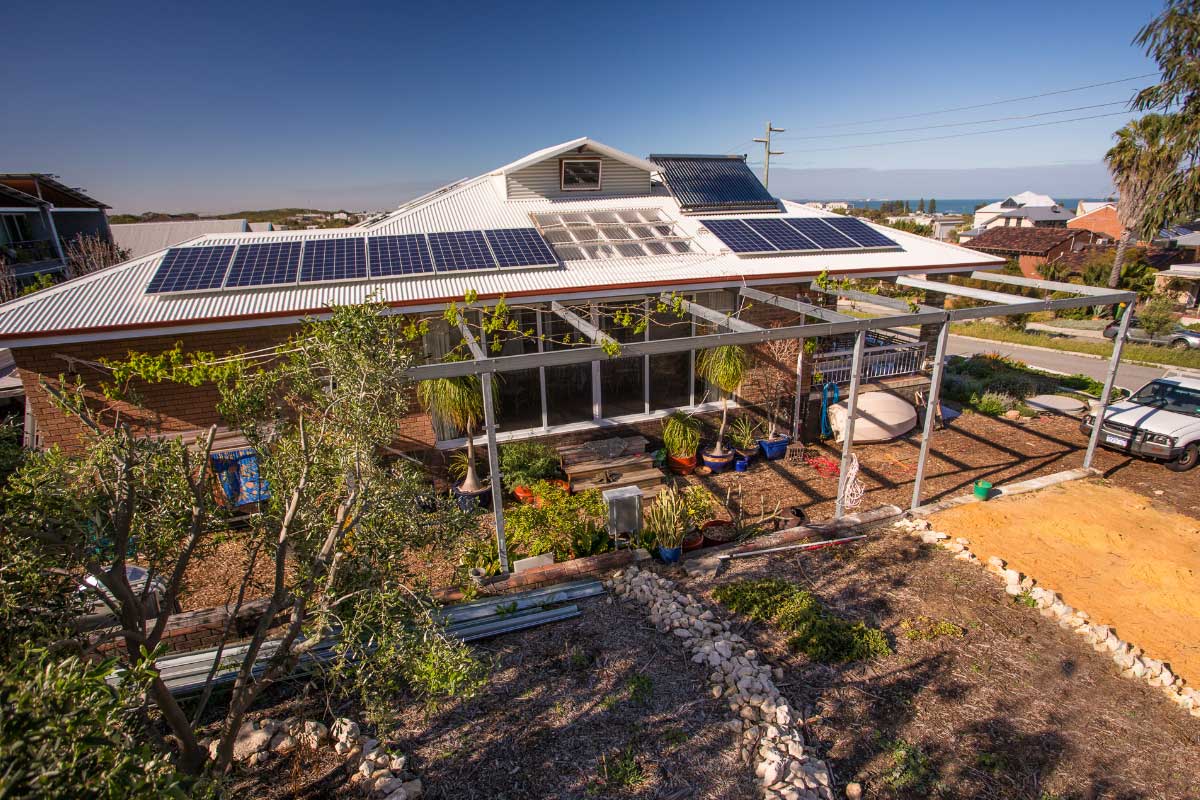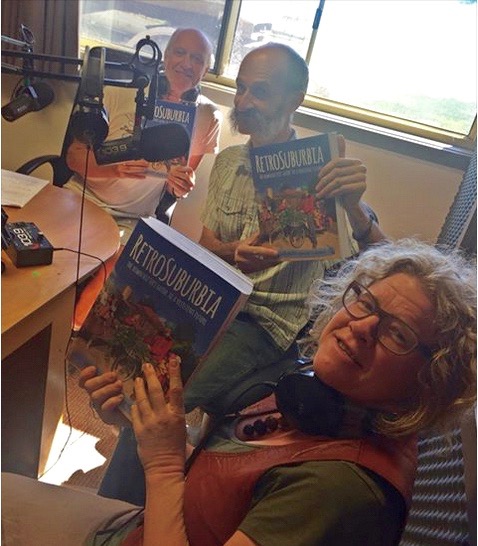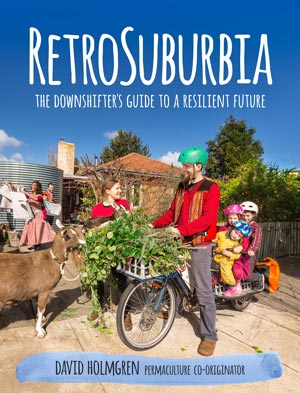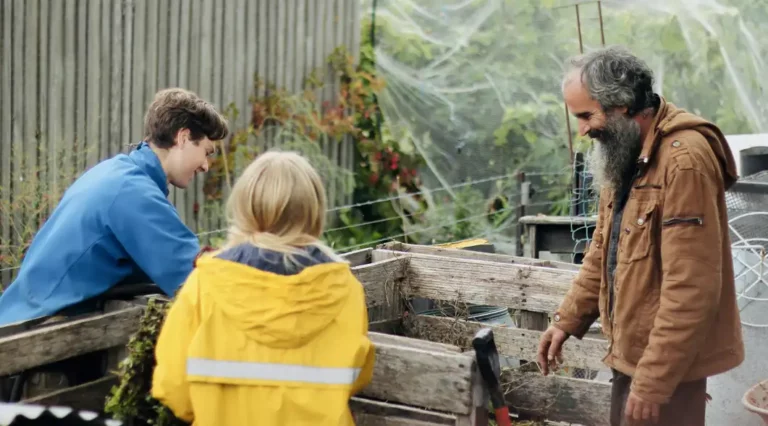Small Rental Unit Case Study
The Story
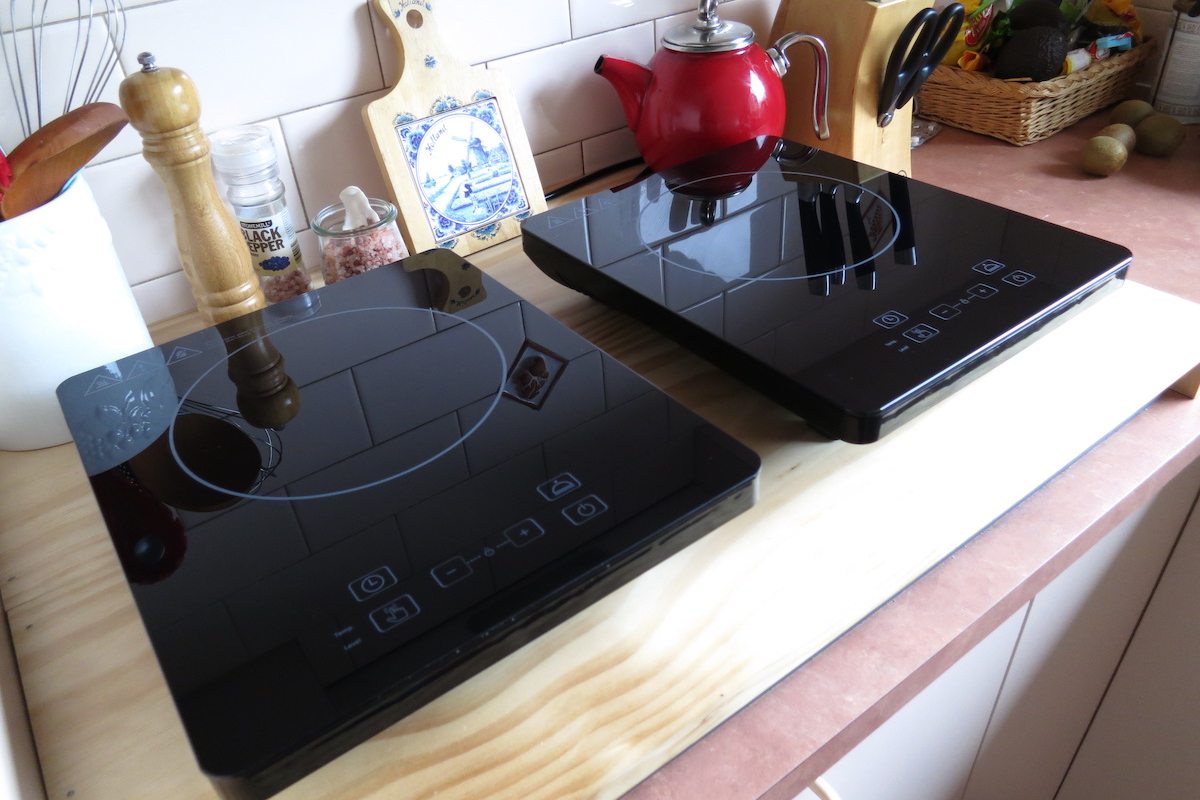
In late 2017, we relocated to Melbourne after a 4 year stint abroad in Germany and began renting in the Western suburbs and later moved our ideas with us to a more suitable rental property earlier this year. Whilst we would love to buy the right piece of land in the right place to take our ideas further, we wanted to see how far we could push the sustainability and frugality envelope in a rental property whilst developing our skills. Here’s what happened:
Energy:
We use 1.7kWh a day on average of 100% GreenPower electricity and have deliberately had no gas connection for over a year now (yes, renters can get the gas disconnected and avoid the daily supply charge). We manage this through:
• Highly efficient LED lighting where it’s needed and self-made solar charging 12 volt lamps
• A combination of wearing the right clothes for the right season combined with efficient space heating use
• A portable solar hot water system that works with an electric kettle for when the sun doesn’t shine
• Two induction hot plates for cooking and occasional use of an oven
• Minimal low power appliances and the habit of switching unused appliances off at the power point when not in use
• A chest freezer converted into a fridge
• A fan and personal evaporative cooling unit for cooling instead of air conditioning
• A 120 Watt portable solar system permanently set up in the backyard with an ex-generator 1.2kWh deep cycle battery outside and two 200Wh lithium-ion batteries to easily “carry” our solar power inside
• Our back up solar system supplies up to 15% of our power needs running all our low powered devices and should provide us with lighting, cooling, IT communications and electric blanket heating during a blackout
• Our solar hot water system produces 10% of our total energy needs
• We spend around $600 a year on energy bills.
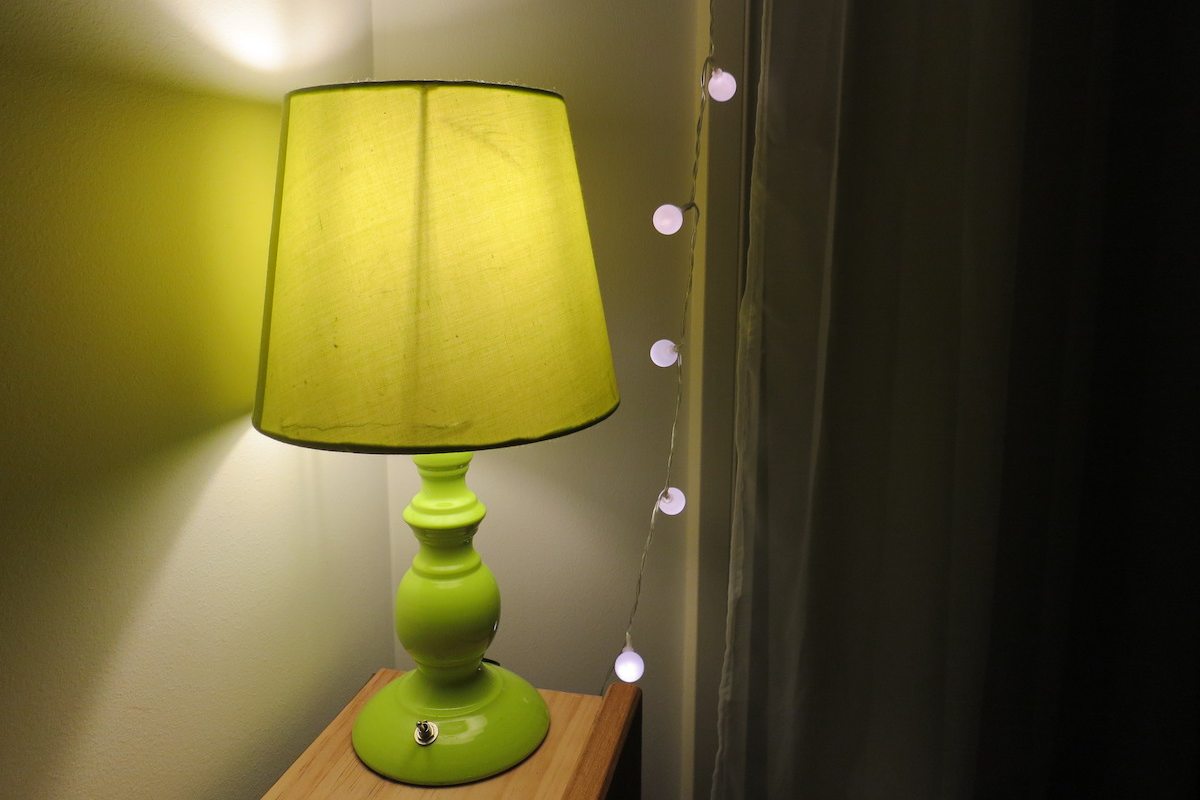
Furniture and appliances:
• Three quarters of our furniture is made from recycled timber which cost us only $500 to build including the purchase of a couple of extra tools
• Building our own furniture this way easily saved us $5000 and gave us valuable carpentry skills for other projects
• The furniture is custom made to make moving easier, for example shelf boxes can be tipped on their side and moved without having to empty the contents out
• The furniture is finished with 100% pure tung oil and citrus solvent so it is food safe and the wood can be reused, burnt in a wood stove or composted at the end of the furniture’s life

Gardening:
• Our garden is built from recycled polystyrene boxes and 10/20 litre food grade buckets costing us $50 per square metre of gardening space
• We bought in half a ton of sandy loam run off topsoil from the edge of a farm
• Where it is appropriate for the plants, most of these have been made into small wicking boxes or buckets
• We have a composting system made from five 20 litre buckets that can be easily moved at any time and produces half a ton of compost per year or a bucket per fortnight on average
• Our garden produced 15% of our total produce in the last year including all of our herbs and leafy greens
• Including foraging for nettles to use for tea and trading compost and labour for canned nectarines, we were self-sufficient for 20% of our produce and saved $1000 over the year
• Our daily garden water requirements are less than 10 litres per day.
Water:
• Using careful habits with our water specific appliances combined with our solar hot water system (which only uses 12 litres of water to provide a good 5 minute shower) we use 50 litres of mains water per person per day on average throughout the year at a cost of $100 a year

Transport:
• We both use our feet and our bikes for local trips and enjoy bike touring for holidays
• One of us uses public transport 3 days a week to get to work
• We both use public transport from time to time on the weekends
• Occasionally when need be, we’ll hire a car with this making up 5-10% of our total transport throughout the year.
• We spend less than $4000 a year on total transport costs (including bike maintenance and depreciation)
The above systems and lifestyle changes have worked well in two rental properties in Melbourne and in the foreseeable future, we plan to increase our produce production.
Living more frugally has also enabled us to reduce our dependence on paid work from five days a week to four and has really increased our savings. It has also made the prospect of buying our own land/home to become more self/community sufficient more realistic and possible without taking on a huge amount of debt.
Even if we never buy, there is something satisfying about knowing that we can do so much in a rental property to reduce our dependence on centralised energy, food and transport systems and increase our interdependence on relationships in the community.
To find out more about how we made the changes we made, visit: www.smartrenting.org
Summary + Statistics
Retrosuburban Real Estate Checklist rating: 2 suns
Location: Altona, Victoria.
Rainfall: 600mm
Soil: Sandy loam (runoff topsoil bought in from another location)
Build: Late 1980s brick veneer
Household Form and Tenure:
- Neighbourhood landlord
- Rental
2019 Property Value: AU$500,000
Household: 2 adults
Website Link: www.smartrenting.org
Facebook Group: Smart Renting
Land Size: 300m2 approx
Floor space: 65m2 (excluding garage)
Roof area: 100m2
Water tank storage: None
Tank water use: 0lt p/d
Mains water use: 100lt p/d
Power: Mains with portable 120W stand alone solar system with 1.2kWh battery storage
Annual Power exported: None
Annual Power imported: 620 kWh (1.7kWh p/d)
Av. Power produced: 0.3kWh p/d
Av. Power used: 2kWh p/d including self consumption of solar power
Annual Wood used: None
Food production: Herbs, leafy greens and some vegetables
Waking hours at home: 50% (one adult works one day a week from home)
More Case Studies

In 2011, Theo Kitchener and Roger Sharp envisioned a permaculture and appropriate technology demonstration sharehouse to show how much could be done in a rental in the suburbs. They wanted somewhere affordable where they could settle in and stay long term, with a large garden, close to a...

Goshen & Katrina were looking for a small family home within walking distance to schools, transport and shops. In 2008 they found a renovated, 1950’s brick-veneer home on 1,000m² of land only 3 minutes walk from the high street.

Our property is the result of a much longed for home. We were living in Melbourne for some years (me working for Cultivating Community and Anton working for the Alternative Technology Assoc.) and
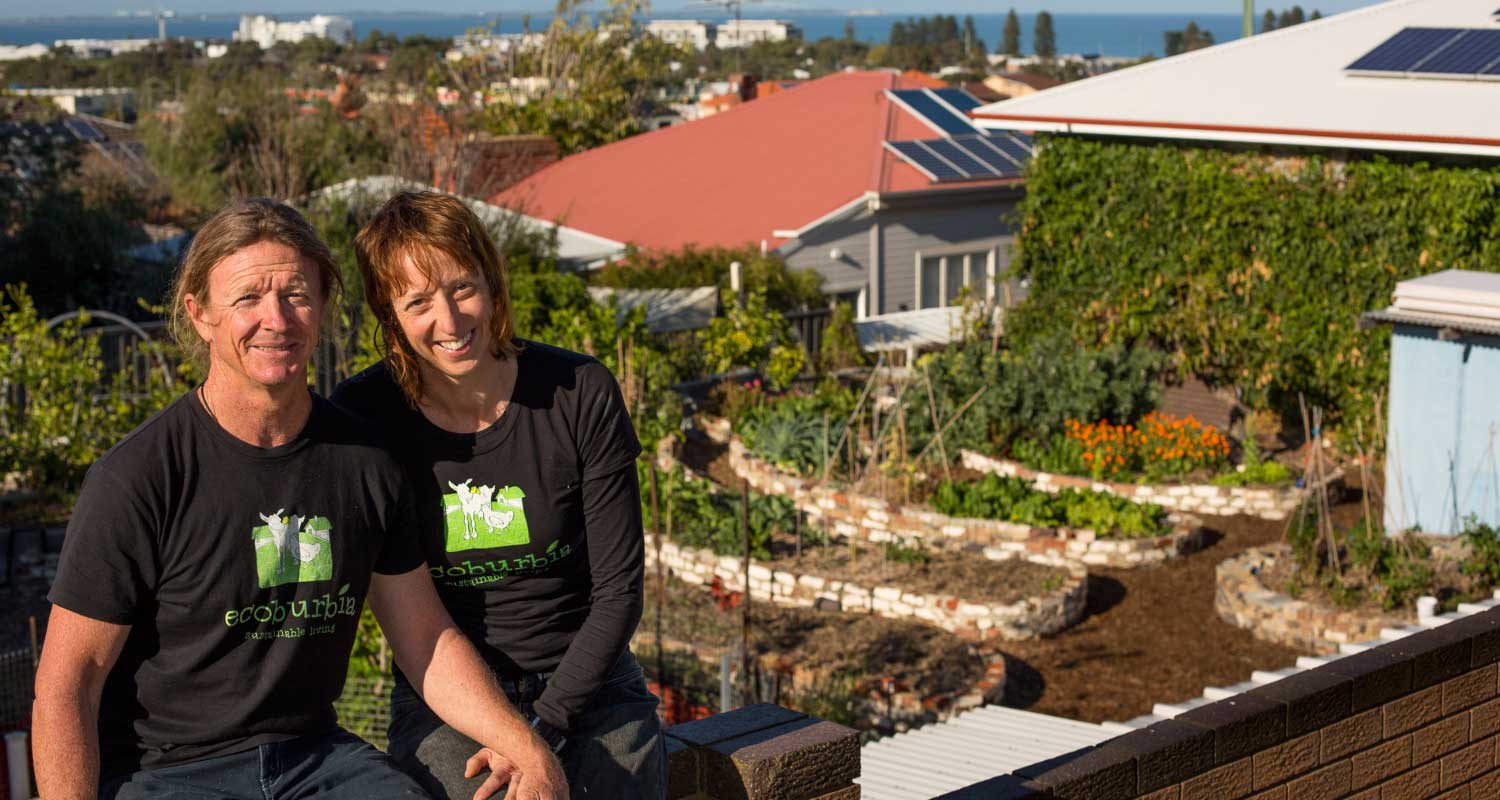
Just what is it? It’s an alternative infill development, an urban farm, a demonstration sustainable house, an educational opportunity, a community hub and most importantly – a benevolent dictatorship! We bought our new home at 16 Livingstone Street in April 2013. The 1970’s Italianate house sits on a quarter acre...

How Rishi transformed a bare and compacted rental patch into a permaculture oasis We met Rishi as a participant in our 2023 Rocklyn Ashram PDC and were awed by his ability to creatively use and respond to change (moving countries, renting in Melbourne), use edges and value the marginal (a...

Back in the late ‘70s I packed up my new bride and set off for the wilds of…Western Sydney! Well it was a little bit wild back then. The estate had no shops and no public transport but the housing and the loans were cheap and so we found ourselves...
